#1 – 11 True Meaning of Lung Acupoints
Samples of Course Materials
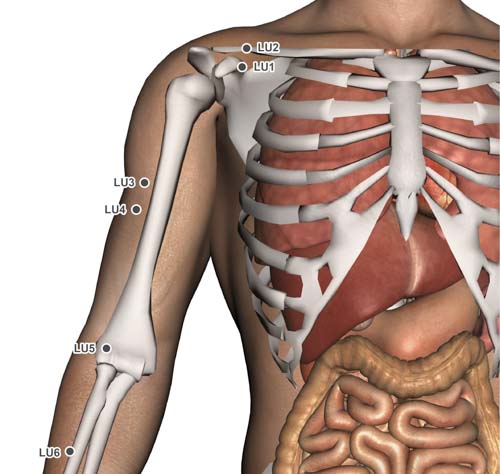
Sample from Introduction Section
Lung Arm Greater Yin Channel
The lungs have yang and yin characteristics. The yang character of the lungs is due to the fact they are on the upper portion of the body and are connected to and control the surface; the lungs control the breathing and skin. According to Chinese medicine principles, the lungs are associated with metal, tiger, and autumn, which are all associated with yang. Because of the yang characteristics, we say that yang embraces yin.
The yang of the lungs helps to shower yin nourishment to the lower portions of the body; the lungs descend the qi. The roots of this are in the ancient Chinese medicine conceptualization that the lungs shower nourishment with…
More in course materials…
Sample from LU1 Section
LU1 (Zhongfu, Central Mansion) 中府
LU1 is lateral and superior to the sternum at the lateral side of the first intercostal space, 6 cun lateral to the Conception Vessel (Ren Mai). LU1 is needled 0.5 to 0.8 inches obliquely and laterally. Avoid the lungs by avoiding a medial or deep insertion to prevent pneumothorax.
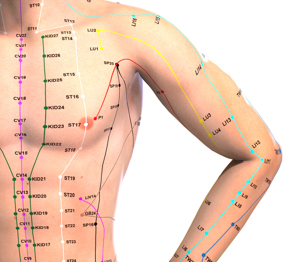
Zhongfu is translated as central mansion. It is the front mu point of the lungs and is the meeting point of the lung and spleen channels. Primary uses are for the treatment of coughing, asthma, and respiratory conditions.
LU1 is the Emergence
Zhongfu is the central mansion and is located over the lungs and the upper portion of the body, above all the major zang-fu organs. The lung channel is where the flow of qi through the channels starts, the lung time of day is 3–5 am, it is the beginning of a new day. LU1 is the first point on the lung channel. This point is the first major acupoint where the qi emerges from a channel. This is akin to the emergence of the sun from the horizon in the early morning and the beginning of the universe from nothing. This is the emergence of yin to yang, from dark to light, and is akin to a newborn human from prenatal to postnatal form. As the sunshine rises up (the qi emerging at the point), it illuminates the surface of the wei (protective) qi and the internal organs.
As a point emerging from prenatal qi, its energy has a restorative function to reverse adverse affects associated with aging. Examples for use of the power of this aspect of LU1 include the treatment of loose and flacid skin with wrinkles (crepey skin), weakness of the lungs, seminal emission due to deficiency, and weakness in the regulation of...
More in course materials...
Sample from LU2 Section
LU2 (Yunmen, Cloud Gate) 云门
LU2 is in the depression below the acromial extremity of the clavicle, 6 cun lateral to the Ren Meridian. This point is needled 0.5 to 0.8 inches laterally. Deep needling and medial needling is contraindicated and may cause pneumothorax.
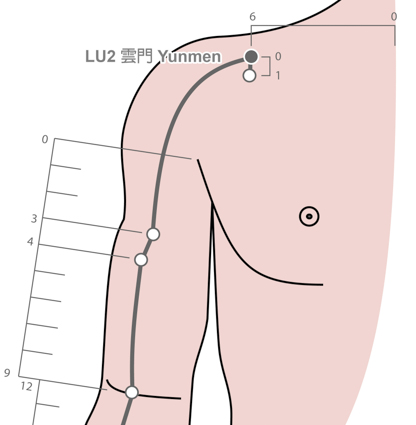
LU2 is the cloud gate and is physically located above LU1. The qi rises like the morning sun from the central mansion (LU1) and illuminates the clouds above at LU2.
The heat of the sunshine brings the moisture to the sky and forms clouds. The idea is that the light of prenatal qi creates substance in the form of moisture in the clouds. Like the conceptualization of the umbrella for the lungs, the moisture can now descend to nourish the body.
Deficiency
Examples of this nourishment include the treatment of malnutrition. LU2 helps nourish the body when combined with LU3 (Sky Mansion) to restore substance and energy back towards prenatal vitality. LU3 is the next point on the channel and is located below on the upper arm. This is the misty energy of LU2 turning into substance at LU3. Needling both points prevents the misty nourishment from leaking and dispersing…
More in course materials…
Sample from LU3 Section
LU3 (Tianfu, Sky Mansion) 天府
LU3 is located on the medial aspect of the upper arm, 3 cun below the end of axillary fold, on the radial side of medial biceps brachii.
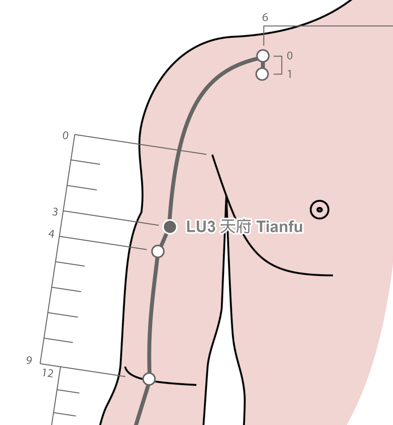
Tianfu is the sky mansion. The mansion is the body. It is a window of sky point. One is looking from the window below at the heavens above. The mist descends from the sky above to the window of the mansion/house below. The moistening nourishment descends from the sky to the body.
The mist from the clouds at LU2 condenses into fluid onto the window of LU3. The mist from the cloud gate at LU2 descends to the upper arm. It condenses into fluid to let the body absorb yin essence more easily. This is similar to steam turning into liquid. LU1 has light, LU2 has the mist of the clouds, and LU3 is the condensation of the mist into fluid.
This is why LU3 is a good choice for the treatment of a dry cough or throat. Combine LU9 and LU2 to generate yin to reduce dryness. This is useful with dryness leading to dry cough…
More in course materials...
Sample from Research Section
Acupuncture, herbs, and moxibustion are effective for the treatment of COVID-19 (coronavirus). Investigators determined that acupuncture plus herbal medicine produces significant patient outcomes for patients with COVID-19. In another independent clinical trial, moxibustion relieved diarrhea in COVID-19 patients and reduced the occurrence of positive nucleic acid results for coronavirus. Let’s take a look at both investigations.
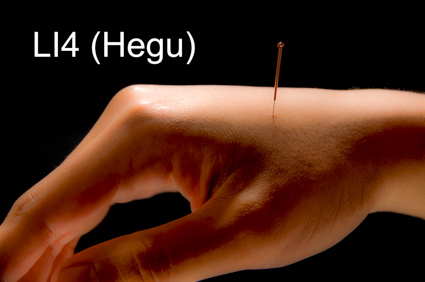
Yueyang Integrative Medicine Hospital (a Shanghai University of Traditional Chinese Medicine affiliate) researchers tested the benefits of acupuncture and herbal medicine for the treatment of COVID-19. The results of this National Natural Science Foundation of China (NSFC) funded research were published in Chinese Acupuncture and Moxibustion. A total of 33 patients from Wuhan Leishenshan Hospital participated in the study. All patients in the study were...
More in course materials...
Sample from Research Section
Acupuncture is effective for the treatment of influenza. Two independent investigations confirm acupuncture’s efficacy for fighting influenza. One laboratory investigation tested acupuncture as a monotherapy and determined that acupuncture lowers mortality rates, increases serum interferon levels, and improves the phagocytosis of viruses. Another investigation finds acupuncture effective for enhancing the clinical efficaciousness of anti-viral drugs. Let’s start with the integrative investigation and we’ll look at the acupuncture monotherapy next. Researchers from the Taizhou Municipal Hospital combined acupuncture with...
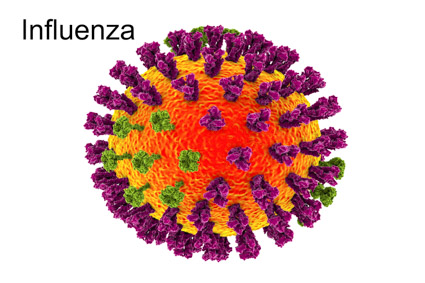
More in course materials...
About the Author
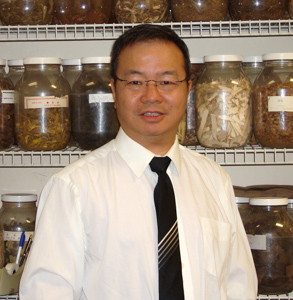
Professor Liao, L.Ac. has served as professor of herbology and acupuncture at the Academy of Chinese Culture & Health Sciences and at Five Branches University. He teaches and practices Taiji, Qi Gong, acupuncture, and herbal medicine. His many years of teaching experience bring the highest quality of courses to HealthCMi.
Prof. Liao has spent decades studying Taoism and the roots of Chinese medicine. For the last two decades, Prof. Liao has taken an annual retreat to China to study with Master Wang Li Ping. He translated the Ling Bao Tong Zhi Neng Nei Gong Shu for Wang Li Ping, which is a guide for meditation in the way of the Taoist Dragon Gate Sect (Long Men Pai). Wang Li Ping is an 18th generation Taoist Master of Long Men Pai. The Ling Bao Tong Zhi Neng Nei Gong Shu includes Taoist secrets of the golden flower and five souls that was delivered by the ancient masters Zhong and Lu. This text includes methods of practice and theory.
Prof. Liao's extensive experience in Taoist theory and meditation practice inform an understanding of the acupuncture points included in this course, according to both ancient and modern Chinese medicine.

